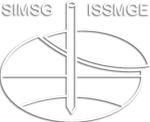Thank you, Dr. MacRobert, for this interesting question.
You will notice that, in the lecture, I have focused on identifying concepts that are demonstrably incorrect or models that yield results that are demonstrably inaccurate or miss an important aspect of soil response. It follows that, even if data from site investigation are not of sufficient quality or quantity, you still don’t want to match that to models or design methods that are not grounded on solid science. In other words, one mistake does not justify another. You can see from this that I am not necessarily in agreement with the quote that you included in your question. I don’t believe that we should lower the standards on one end because they are low on the other.
Naturally, insufficiency of data or their low quality will limit what we can do on the analysis side of the problem. So your question raises another important point: we should, whenever possible, teach students what a good site investigation program should be. As an example, consider the CPT versus the SPT. Any data insufficiency, however, would not be, in my view, a reason to use equally low-quality methods of analysis and design.
As to the second part of your question – which addresses what we should be teaching students in the limited number of hours devoted to geotechnical engineering at the undergraduate level – I would guide myself by the Bible: “And with all thy getting get understanding.”
Proverbs 4:7. I think that it is tedious for students when we teach them correlations, charts and methods of calculation without the all-important underlying science. You don’t need to and probably should not delve too deep into constitutive modeling at that level. But you can teach students about the real sources of shear strength – friction and dilatancy – and use some simple model (I give the Bolton (1986) very simple model as an example in the lecture) to bring it all together for students.
As I also stated in the lecture, the education of today is the practice of tomorrow, so we should never tailor our teaching to match practices that are lacking in one way or another.
